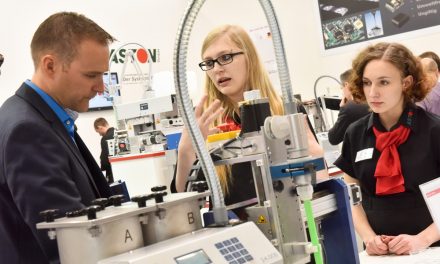Concern for Intermetallic Thickness Growth in SAC Solder Joints in Harsh Service Environments

By Dr. Ron Lasky
The service temperature for electronics in a modern automobile can be higher than 125C. These high temperatures raise the concern of copper-tin intermetallic growth in solder joints.
SOURCE: Indium Blog


Figure 1. A Blacksmith’s forge temperature chart
So, what is SAC solder’s copper-tin intermetallic growth at 125C as a function of time? Fick’s law of diffusion tells us that the growth of the intermetallic, D, is given by:
D = (k(T)t)^0.5 Eq 1.
Where k(T) is a temperature dependent growth rate constant and t is time. Siewert etal[i] performed experiments in which D was measured for various temperatures and times for SAC solders. Following Siewert’s lead I will use time in hours. By using their data in their Figures 2a through 2c for SAC solder, I was able to plot k in an Arrhenius graph, see Figure 2.

Figure 2. An Arrhenius Plot of Siebert’s Data
.
From Figure 2, we see that Ln k = -6784.7/T + 14.81 or k = exp (14.81)*exp-(6784.7/T). So, at 125C or 398K, k = 0.1068. Using this value of k, we can plot D as a function of time. The results are in Figure 3. Note that both scales are logarithmic. In 1,000 hrs (42 days) the intermetallic has grown 10 microns. In 3 years, it hits 53 microns. We should be cautious, as Siewet’s data has error bars. But, my sense is that these projections are within a factor of two.

Figure 3. Intermetallic Growth as a Function of Time at 125C in SAC Solder.
What is the effect of these thick intermetallics in a harsh auto environments? No one knows, but I would encourage someone to perform some experiments to find out.
In the meantime, I have developed an Excel® spreadsheet that will calculate IMC growth at any temperature, T, for times from 1 to 100,000 hrs. See Figure 1 for the input for this spreadsheet. The user only has to enter the value of temperature in degrees Celsius in cell A2 and the IMC thickness is calculated and displayed in cells D2 through D7 for times 1 to 100,000 hrs.
The IMC thickness is also plotted in a graph as shown in Figure 4. If you are interested in a copy of this spreadsheet, send me an email at rlasky@indium.com.

Figure 4. The output graph of IMC thickness at a specific temperature versus time.
It is important to note that these calculated IMC thickness values are only approximations from Siewert’s data as found in his paper: Siewert, T. A. etal, Formation and Growth of Intermetallics at the Interface between Lead-Free Solders and Copper Substrates, APEX 1994. So, caution is advised, however, I expect the values calculated by the spreadsheet to be correct to within a factor of two.













